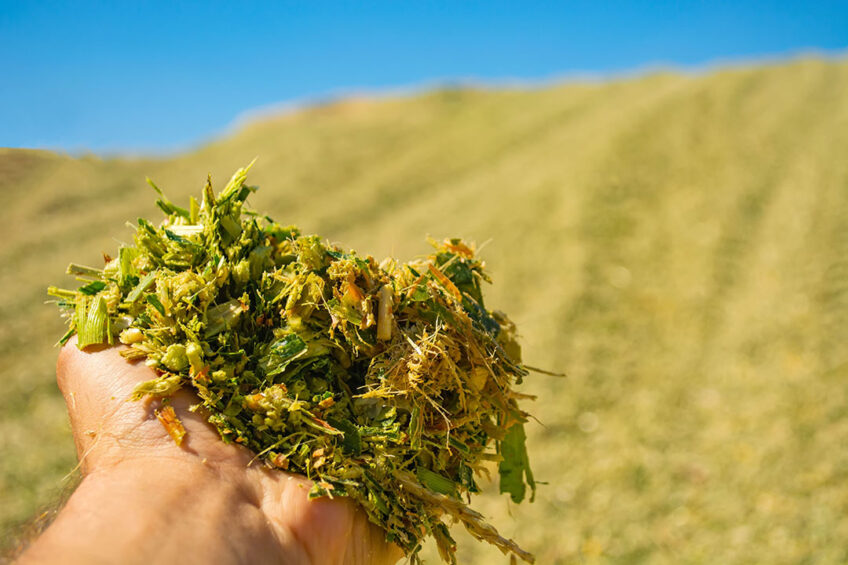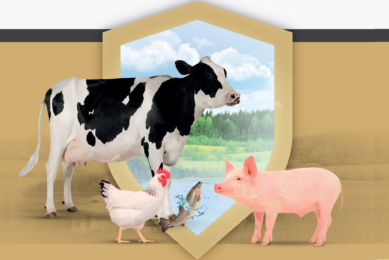Improving corn silage feeding value for heifers

With a simple strategy of ensiling that replaces a standard common sealing system, researchers from the State University of Maringá in Brazil have realised improved silage conservation and performance feeding value of growing dairy heifers.
Although the effects of better sealing on silage composition have been extensively reported, there is little information on possible benefits to silage intake and animal performance. In the current study, researchers found that improving the ensiling process decreases the proportion of inedible silage and increases the feeding value of whole-plant corn silage for dairy heifers.
Changing the sealing strategy may affect silage quality and perhaps growing performance of replacement heifers. On dairy farms, growth rate of heifers affects age at first calving, lifetime milk production, and economic returns.
Ensiling methods
The researchers compared the qualities of 2 silages obtained by 2 different ensiling strategies, and the performance of dairy heifers fed the silage-based diets. The diets were based on whole-plant corn silage stored in bunker silos sealed using 2 different methods:
- Standard polyethylene film covering the top surface, held in place with rows of tyres every 3 metres (the standard).
- A new strategy that had an oxygen barrier system comprised of an ethylene-vinyl alcohol film lining side walls and covering the silage, protected with a woven anti-UV cover and gravel bags placed around the edges and every 3 metres across the silo.
After 6 months of storage, the silage was fed to 26 Holstein heifers for 60 days based on a total mixed ration (TMR). Both diets contained (on DM basis) 80% corn silage, 17.5% soybean meal, and 2.5% mineral mix.
Improved silage feeding value for heifers
The proportion of inedible silage was lower in the diet of the oxygen barrier system (OB) than in the standard polyethylene film (PE) system (0.8 vs. 4.0% DM). The improved preservation of OB silage compared to PE silage was attributed to the lower oxygen entry through the cover film in the OB system.
In addition, in the OB system, the bunker walls were lined with the ethylene-vinyl alcohol film, and the covering film was protected with a tight weave high-density polyethylene anti-UV cover weighted with gravel bags. The anti-UV cover weighted with gravel bags protects the polymer against sunlight and reduces billowing caused by the wind.
In this study, silage assessment revealed that the OB sealing system was more effective in preventing oxygen influx into the silo. The OB treatment had fewer yeasts and moulds, and consequently more lactic acid and ethanol-soluble carbohydrates, lower pH and temperature, and longer aerobic stability than the PE treatment.
Additionally, due to lower air infiltration, the OB silage had fewer anaerobic spores, NH3-N, and acetic acid.
Overall, the researchers found that the OB sealing system reduced DM loss during storage by 46% at the silo top layer and reduced the proportion of inedible silage by 80%.
Feed efficiency and growth performance
Similar feed efficiency and total-tract digestibility were observed between the 2 silage systems, but animals that received the OB diet had higher (9%) DM intake compared to PE ensiling system due to faster eating rates and a greater number of meals per day in the OB system.
According to the researchers, faster eating rates were a consequence of improved palatability observed with the OB ensiling system diet. They added that greater concentrations of acetic acid and NH3-N in the PE silage system are associated with lower DM intake in dairy cattle.
The OB treatment also increased digestible energy intake by 8%. However, the body condition score was not different between the 2 silage systems, but heifers fed OB had greater heart girth, higher hip height, and better (12%) weight gain. “The greater DMI induced a higher DE intake and led to a greater ADG in heifers fed the OB ration,” concluded the researchers.
Further research
The researchers concluded that replacing a standard sealing method based on a polyethylene film with an oxygen barrier sealing system based on an ethylene-vinyl alcohol film protected with a woven anti-UV cover in whole-plant corn silage improves silage conservation, aerobic stability of TMR, feed intake, and performance of growing dairy heifers. However, they emphasised additional work to identify all compounds modified by sealing strategies that can alter feeding behaviour and feed intake in dairy cattle.
Join 13,000+ subscribers
Subscribe to our newsletter to stay updated about all the need-to-know content in the dairy sector, two times a week.










